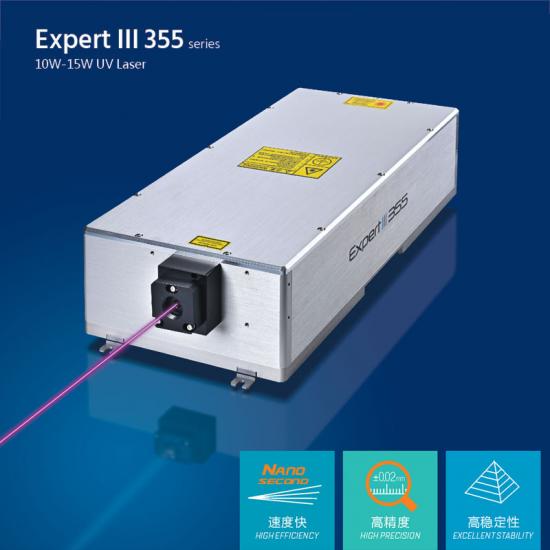Neuester Blog
High Power Ultraviolet Lasers Trader sagen Ihnen, was ist ein Festkörperlaser?
Jun 29 , 2022High Power Ultraviolet Lasers Trader sagen Ihnen, was ist ein Festkörperlaser?
1. Festkörperlaser
Festkörperlaser (SSL) ist eine Art Laser mit festem Material als Verstärkungsmedium des Lasers. Es besteht hauptsächlich aus Verstärkungsmedium, Kühlsystem, optischem Resonator und Pumpquelle. Da Maiman et al. Rubinkristall (Cr:Al2O, Wellenlänge 694,3 nm) als Laserarbeitsmaterial zur Herstellung des weltweit ersten Festkörperlasers im Jahr 1960, Festkörperlaser gehören zu den von Wissenschaftlern am häufigsten untersuchten Lasern. Im Vergleich zu anderen Lasern haben Festkörperlaser einzigartige Vorteile wie hohe Ausgangsleistung, breiter Ausgangswellenlängenbereich (insbesondere in Kombination mit Frequenzverdopplungstechnologie), kontinuierliche oder gepulste Leistung und einfache Verwendung. Sie sind weit verbreitet in Industrie, Militär, Information und Landwirtschaft. , Wissenschaft, Medizin, Wirtschaft und andere Bereiche.
Festkörperlaser
2. Arbeitsprinzip des Festkörperlasers

uv laser | green laser | Ultraviolet lasers | uv dpss laser | nanosecond laser | UV laser source | Solid State Lasers
The working principle of solid-state lasers is the combined operation of four major components. The gain medium is the core of the solid-state laser and consists of a matrix and activated particles. The matrix determines the physical and chemical properties of the gain medium, while the energy level structure and transition characteristics of the activated particles It has a decisive impact on the performance of the laser and the fluorescence lifetime; the cooling system is the key to the solid-state laser, through which the heat inside the gain medium is taken away to reduce the thermal effect of the gain medium; the optical resonator is composed of a total reflection mirror and a half mirror. It is composed of continuous oscillation through the positive feedback of photons to form stimulated emission, and at the same time controls the direction and frequency of the beam to ensure high monochromaticity and high directivity of the output laser; the pump source provides light of a specific frequency to make the particles inside the gain medium The particle inversion is realized by excitation from a low-energy state to a high-energy state.
3. The difference between solid-state lasers and fiber lasers
The difference between the two is mainly reflected in the application differences in the field of laser processing applications:
(1) Laser marking
Solid-state laser: marking of metal/non-metal materials, among which non-metal materials include packaging, glass, ceramics, plastics, polymers, etc., especially for the marking of fine and high unit price materials.
Fiber laser: mainly for marking metal materials.
(2) Laser cutting
Solid-state laser: cutting of metal/non-metal materials, especially high-precision cutting of thin materials.
Fiber laser: mainly for metal material cutting, mainly for thick material cutting.
(3) Laser drilling
(4) Laser welding
Solid-state laser: mainly for welding non-metallic materials, especially for high-precision welding of thin materials.
Fiber laser: mainly for metal material welding, mainly for thick material welding.
Main difference:
The solid-state laser has high peak power and high pulse energy, and can convert infrared light into green light, ultraviolet light, and deep ultraviolet light and other short-wavelength laser outputs through nonlinear crystals. Short-wavelength lasers have small thermal effects and can achieve higher machining accuracy, thereby realizing ultra-precision and ultra-micro machining. In addition, the absorption and utilization efficiency of most materials, especially non-metallic materials, for short wavelengths is significantly better than that of infrared wavelengths. Therefore, the types of materials suitable for solid-state lasers can break through the limitations of metal materials and extend to the range of non-metallic materials. Thin and brittle materials It has advantages in machining and is used in the field of micromachining.
The output of fiber laser is infrared light, which is mainly used in the field of macro processing of metal materials with a certain thickness.
(5) Additive Manufacturing (3D Printing)
Solid-state lasers: photocuring and 3D printing of high-melting, highly reflective materials.
Fiber Lasers: Metal Sintering
The main difference: light curing acts on photosensitive resin, resin material does not absorb infrared light, and high-reflection material reflects long-wavelength beam such as infrared light, so this type of application mainly uses solid-state laser; metal sintering mainly acts on metal material, high-power continuous output Fiber lasers have advantages.
(6) Laser cladding
It is mainly based on fiber lasers. Laser cladding is similar to metal sintering, and fiber lasers are mainly used.
(7) Frontier scientific research
Mainly based on solid-state lasers, including environmental analysis, genetic analysis, nuclear fusion and other fields.
The precision requirements of such application scenarios have reached sub-micron or even nanometer level. Solid-state UV lasers have become the preferred light source for core processing equipment in such application scenarios due to their advantages of short wavelength, high peak power, and large pulse energy.